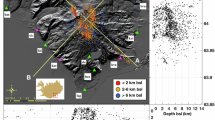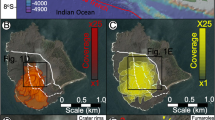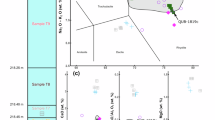Abstract
AFTER witnessing, with Profs. Lyon and Orr, remarkable effects of afterglow on November 27, I waited for the next issue of NATURE (No. 1205), in the expectation that similar phenomena would be mentioned as having been seen in the British Isles. Curiously enough, the letter on “Afterglow” in that issue comes from Honolulu, dated November 8. It is possible, however, that the effects of volcanic dust from one of the great eruptions of the past summer are now beginning to be noticeable in opposite hemispheres. The Krakatão eruption of August 27, 1883, appears to have caused exceptional afterglows Honolulu on September 5, arid in Western Europe by November 9, in the same year.
This is a preview of subscription content, access via your institution
Access options
Subscribe to this journal
Receive 51 print issues and online access
$199.00 per year
only $3.90 per issue
Buy this article
- Purchase on SpringerLink
- Instant access to full article PDF
Prices may be subject to local taxes which are calculated during checkout
Similar content being viewed by others
Author information
Authors and Affiliations
Rights and permissions
About this article
Cite this article
COLE, G. The Afterglow. Nature 47, 127–128 (1892). https://doi.org/10.1038/047127e0
Issue date:
DOI: https://doi.org/10.1038/047127e0



